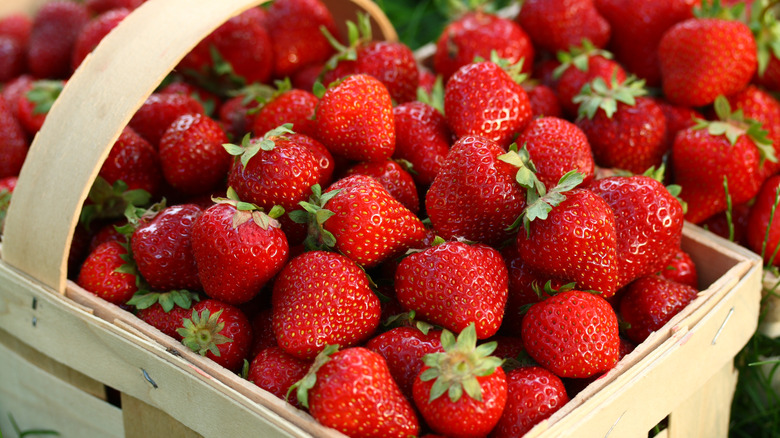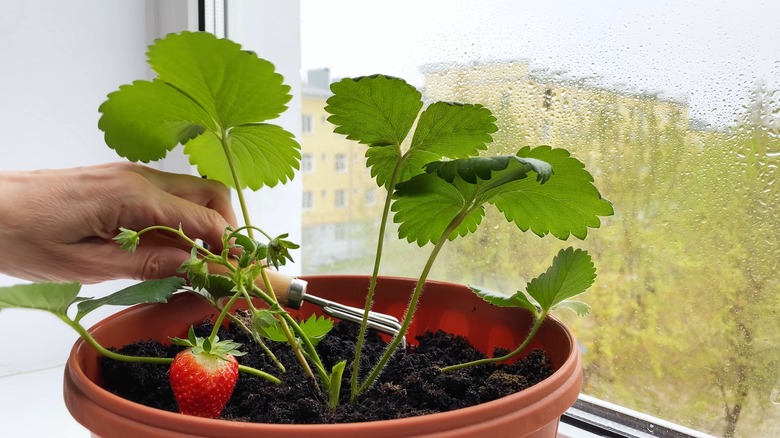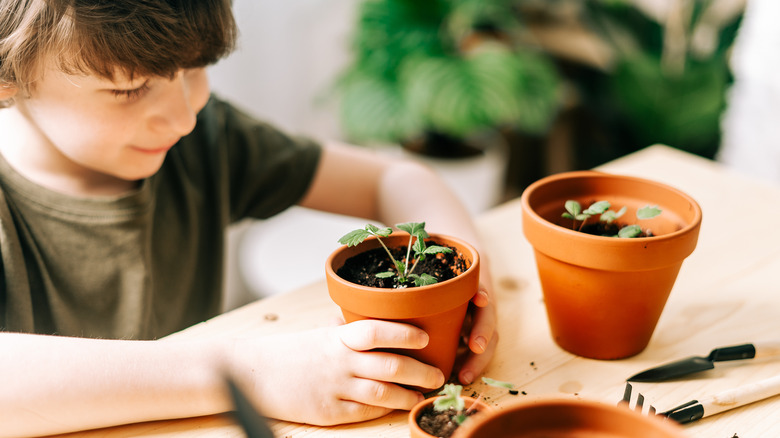The Best Strawberry Plant Varieties For A Successful Indoor Harvest
We may receive a commission on purchases made from links.
Strawberries are one of the iconic fruits of summer: sweet, red, and juicy. They can make any meal more enjoyable and are delightful snacks all on their own. This delicious and beloved fruit grows best in the summer months when the days are warm and long, but there is no reason that you cannot enjoy them year-round from the comfort of your own home. This is excellent news for apartment dwellers or individuals who don't dare to plant their precious strawberries outside, where pests and foraging animals may prey on your hard-earned harvest.
Strawberry plants are ideal candidates for an indoor garden — albeit some strawberries are better suited to indoor growth than others. When selecting a strawberry plant for indoor harvest, the most important characteristic to look for is varieties classified as "day-neutral." The term "day-neutral" means that these specific strawberries will not respond to the length of the day, allowing them to grow beyond normal seasonal limitations (typically June through July) and giving you more flexibility over the best time to plant your strawberries. When grown outdoors, day-neutral varieties' season extends far beyond the normal strawberry season (allowing them to grow from July until roughly October in most cases).
Best day-neutral strawberries for indoors
Both the Florida Beauty and Albion varieties are day-neutral and should continue to grow successfully indoors for months with the proper care (this includes ample light, water, and moderate climate control that does not exceed 90 degrees or dip below 40 degrees). Day-neutral strawberries have many benefits, including a higher yield than other varieties. Additional day-neutral strawberries that are likely to grow well indoors include the Alpine and Seascape varieties, both of which are known for their sweetness.
When planted indoors, day-neutral strawberries can be grown any time of the year and will begin to produce fruit in several months (if purchased as an established plant from a nursery). In order to provide the best chances at a healthy yield, you'll want to avoid the mistakes everyone makes when planting strawberries. These tips include installing your plants in well-drained soil with a 5.5 to 6.6 pH and watering them regularly. You may wish to opt for strawberry varieties that produce smaller fruit, being conscientious about space limitations, and choose varieties that put out limited runners (these parameters make Alpine strawberries an excellent choice due to their small size and self-limiting growing pattern).
Important indoor-specific growing tips
Selecting the right strawberry variety may be the first part of attempting a successful indoor harvest, but additional steps are required. Strawberries grown inside are removed from their natural environment, making caring for your strawberry plant harder and easier. A benefit of growing produce inside is that it reduces the chance of insects and other pests eating the final product. However, you will need to pollinate strawberries by hand, as the bees responsible for this vital process will not have access to your indoor strawberry plants.
If you want to score big on your indoor strawberry harvest, choosing the right pot — go for a bigger rather than smaller one so that the roots are not cramped — and the correct location inside will make all the difference. Strawberry plants need a lot of sunlight (they are, after all, summer berries), so select a south-facing window that will provide the plant with 6 to 8 hours of sunlight daily, ideally. If you reside in a cloudier location, placing grow lights (such as GooingTop LED Grow Light, $45 on Amazon) on the plants for 10 to 12 hours a day is an acceptable alternative. Indoor strawberry plants may also require the regular application of a slow-release fertilizer to help support their growing process and their overall health and yield.


